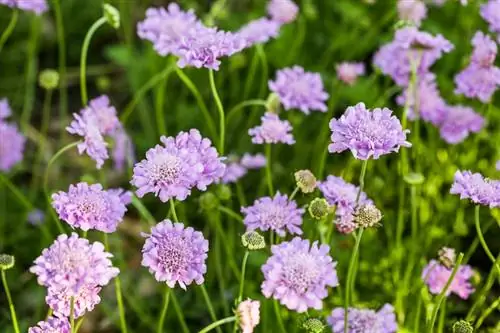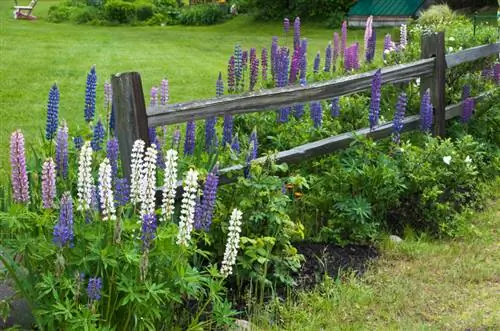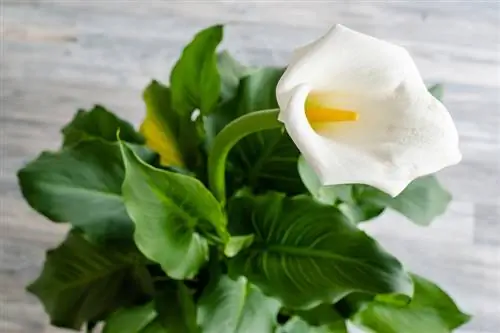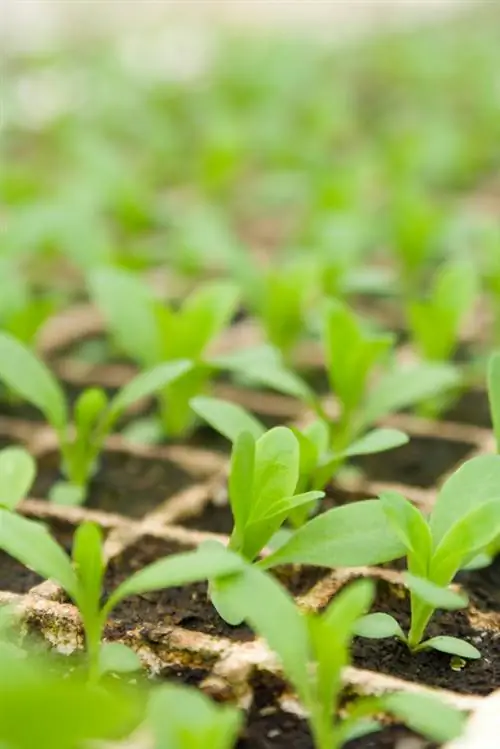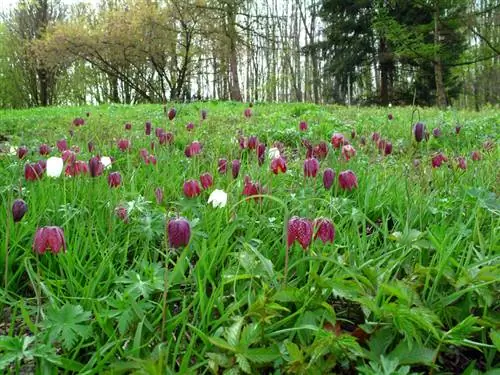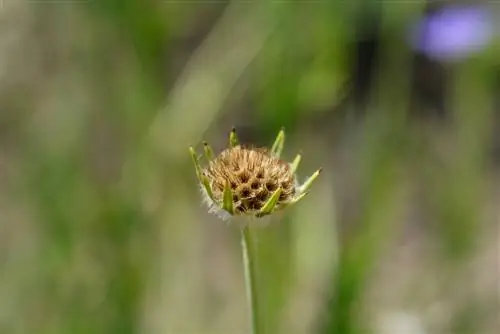- Author admin [email protected].
- Public 2023-12-16 16:46.
- Last modified 2025-01-23 11:20.
Scabioses are a perennial plant species that is represented in Central Europe with around 20 subspecies. The attractive flowers often catch the eye in natural flower meadows, but are also perfect for growing in your own garden.
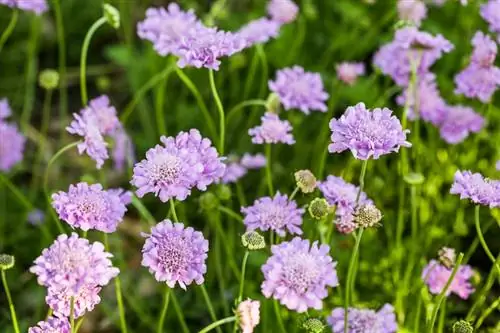
What are the basics of scabiosis care?
For optimal care of scabioses, they should be watered regularly, but not too frequently, and planted in well-drained soil. Avoid waterlogging, fertilize in spring, remove wilted flowers and cut back in autumn to maintain flowering ability.
How often should scabioses be watered?
Similar to ice plants, the various types of scabiosis also tolerate certain dry phases better than persistent waterlogging. However, the plants should be watered thoroughly, especially in periods of extreme dryness and heat and immediately after planting. However, this type of plant doesn't particularly like clayey soils, which is why heavy soils should be made more permeable with sand, gravel and compost.
When can scabiosis be transplanted?
The best times for transplanting scabiosis are in spring and late autumn after the last flowers. If the plants become lazy after a few years in the same location, then they should be divided as with the yarrows.
When and how are scabioses cut?
Perennial types of scabiosis do not necessarily need to be cut, as they regrow the above-ground plant material every year anyway. However, it promotes the formation of overwintering buds if the plants are cut back to just above the ground in autumn. You should also remove spent flower heads during flowering to encourage more flowers to form. In this way you can also prevent the scabioses from seeding themselves in the garden, which can sometimes be undesirable.
Are scabioses susceptible to diseases and pests?
The various scabiosa species are not particularly susceptible to diseases and pests. The only thing that can be dangerous to their development is the presence of waterlogging at the roots or moving too close together with the rest of the vegetation in the garden.
Should scabiosis be fertilized?
The following fertilizer variants are suitable for fertilizing scabioses:
- Organic fertilizer
- Mineral fertilizer
- Long-term perennial fertilizer
- Compost
If the scabioses are being transplanted anyway, we recommend incorporating loose compost soil into the substrate at the location. In spring, sprinkle around 20 to 30 grams of long-term perennial fertilizer (€22.00 on Amazon) into the perennial bed to ensure plenty of flowers.
How do scabioses overwinter?
Most perennial scabiosa species are hardy with relative ease. A cover should only reduce the risk of frost in exposed locations, when growing in a pot or in seasons with so-called cold frosts.
Tip
Since scabiosis usually produces its flowers at the same time as yarrow is blooming, contrasting mixtures of both plants are particularly popular in farm and natural gardens.

